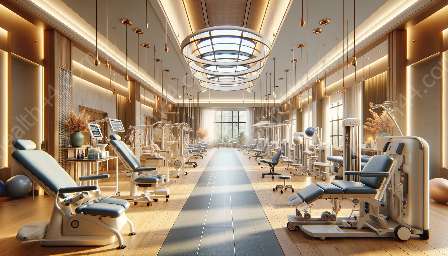Continuous Passive Motion (CPM) machines have emerged as a vital tool in rehabilitation equipment and medical devices & equipment for patients recovering from various injuries and surgeries. These innovative devices offer a wide array of benefits and have revolutionized the way patients undergo physical therapy and recovery.
Understanding Continuous Passive Motion (CPM) Machines
Continuous Passive Motion (CPM) machines are mechanical devices designed to provide controlled and repetitive movement of a specific joint. They are commonly used in the rehabilitation process following orthopedic surgeries or injuries that affect joint movement.
The primary objective of CPM machines is to prevent joint stiffness, maintain joint range of motion, stimulate tissue healing, and reduce the formation of scar tissue. These devices are particularly beneficial for patients who are unable to perform active exercises due to pain, swelling, or mobility restrictions.
The concept of continuous passive motion was introduced as an alternative to traditional rehabilitation techniques, offering a more gentle and controlled method of mobilizing joints without exerting undue stress. CPM machines are available for various joints, including the knee, shoulder, elbow, and wrist, and can be customized based on the patient's specific needs.
Functionality and Operation of CPM Machines
CPM machines operate through a motorized system that controls the speed, range, and duration of joint movement. The device is typically set up to move the affected joint through a predetermined range of motion at a controlled speed, providing gentle and continuous flexion and extension.
Users can adjust the parameters of the CPM machine based on the recommendations of healthcare professionals to ensure optimal rehabilitation outcomes. Most machines are equipped with user-friendly interfaces and intuitive controls, allowing patients to comfortably and safely operate the device under supervision.
Utilizing CPM Machines in Rehabilitation
CPM machines play a crucial role in the recovery process by promoting early mobilization and minimizing the risk of complications associated with immobilization, such as joint stiffness and muscle atrophy. The continuous motion provided by CPM machines facilitates the circulation of synovial fluid within the joint, which aids in nourishing and lubricating the joint surfaces.
Furthermore, CPM machines can help reduce pain and discomfort by gradually stretching the soft tissues surrounding the joint, promoting a greater range of motion and enhancing flexibility. These devices are also recognized for their ability to assist in the management of swelling and edema, contributing to an accelerated healing process.
Healthcare providers often incorporate CPM machines into comprehensive rehabilitation programs to complement other therapeutic interventions, such as physical therapy, occupational therapy, and exercise regimens. The integration of CPM machines enables a more holistic approach to patient care, addressing the specific needs of individuals recovering from orthopedic procedures and musculoskeletal conditions.
Advantages of CPM Machines
The utilization of CPM machines offers numerous advantages for both patients and healthcare professionals. Some of the key benefits include:
- Promotion of Joint Healing: CPM machines encourage the natural healing process of the joint by stimulating tissue repair and regeneration, allowing for a faster recovery.
- Prevention of Joint Stiffness: By maintaining continuous motion, CPM machines effectively prevent the development of stiffness and contractures that can impede rehabilitation progress.
- Enhanced Patient Comfort: Patients experience reduced discomfort and pain during the rehabilitation process as a result of the gentle and controlled movement provided by CPM machines.
- Improved Range of Motion: Regular use of CPM machines leads to improved joint flexibility and mobility, enabling patients to regain functional movement more efficiently.
- Customized Rehabilitation: CPM machines can be tailored to accommodate the specific needs of patients, making them suitable for a wide range of orthopedic conditions and post-operative care.
Future Developments in CPM Technology
As technology continues to advance, the development of CPM machines is expected to evolve to further enhance patient outcomes and satisfaction. Integrating smart sensors, remote monitoring capabilities, and interactive interfaces may increase the accessibility and effectiveness of CPM devices, improving patient adherence and engagement with their rehabilitation protocols.
Conclusion
Continuous Passive Motion (CPM) machines have proven to be indispensable in the realm of rehabilitation equipment and medical devices & equipment, delivering valuable contributions to the recovery and healing processes of patients recovering from orthopedic injuries and surgeries. With their ability to promote joint healing, improve mobility, and enhance patient comfort, CPM machines continue to shape the landscape of modern rehabilitation and redefine the standard of care in orthopedic rehabilitation.


